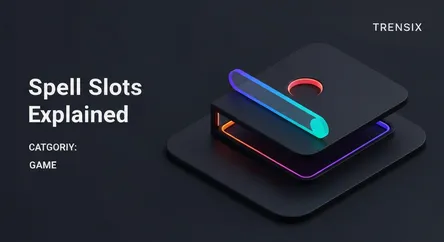Game
Spell Slots Explained

Discover what spell slots are, the resource that spellcasters in tabletop RPGs like Dungeons & Dragons use to cast their powerful magic.
What is it?
Spell slots are a core gameplay mechanic for magic-users in many tabletop role-playing games (TTRPGs), most famously Dungeons & Dragons (D&D). Instead of a mana or magic point pool, a spellcaster has a limited number of spell slots for each spell level they can access. To cast a spell, the player must expend a slot of that spell's level or higher. For example, casting a 1st-level spell requires a 1st-level slot. Using a higher-level slot on a lower-level spell often enhances its effects. These slots are a finite resource, typically replenished after the character takes a long rest, forcing strategic resource management.
Why is it trending?
The popularity of spell slots is directly tied to the massive resurgence of Dungeons & Dragons and its influence on video games. The blockbuster success of Baldur's Gate 3, which meticulously adapts the D&D 5th Edition ruleset, introduced this mechanic to millions of new players. Gamers accustomed to simple mana bars were suddenly engaging with a more complex system, sparking countless online discussions, guides, and memes about how to effectively manage spell slots, making it a hot topic in gaming communities.
How does it affect people?
For players, the spell slot system creates a framework for tactical decision-making. It forces them to weigh the immediate benefit of casting a powerful spell against the potential need for it later. This resource management adds a layer of tension and strategy to every encounter and adventuring day. It makes the choice to use a high-level spell like 'Fireball' a significant moment with consequences. This system defines the rhythm of play for spellcasting classes, encouraging careful planning and teamwork to conserve magical resources for when they are most needed, profoundly shaping the player's experience.